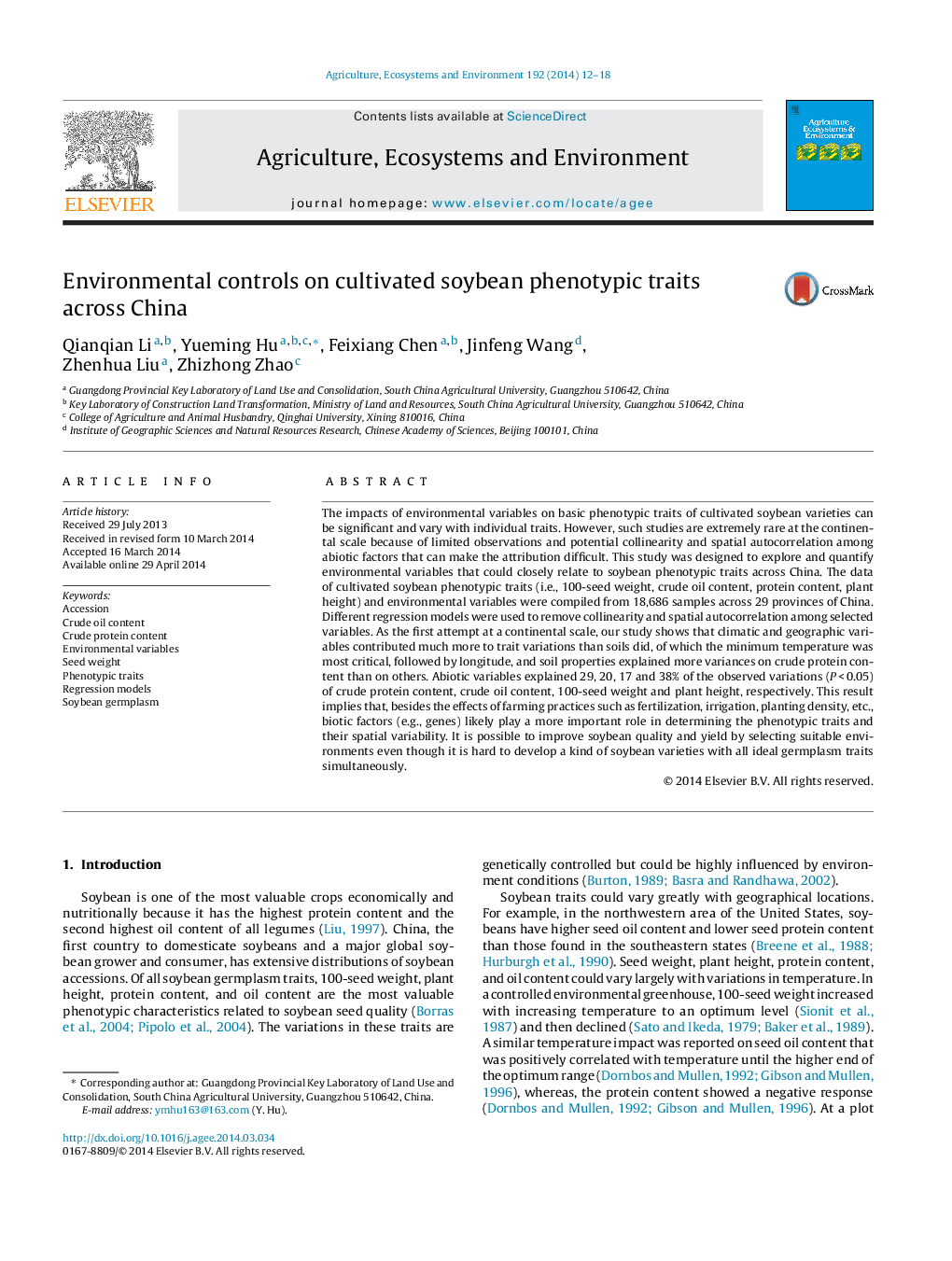| کد مقاله | کد نشریه | سال انتشار | مقاله انگلیسی | نسخه تمام متن |
|---|---|---|---|---|
| 2413932 | 1552060 | 2014 | 7 صفحه PDF | دانلود رایگان |
• We compiled data of soybean traits and their abiotic variables from 18,686 samples across China.
• Statistical models were used to remove collinearity and autocorrelation among variables.
• Climatic effects were significant but varied with individual phenotypic traits.
• There would be no places to produce a variety with all ideal germplasm traits simultaneously.
The impacts of environmental variables on basic phenotypic traits of cultivated soybean varieties can be significant and vary with individual traits. However, such studies are extremely rare at the continental scale because of limited observations and potential collinearity and spatial autocorrelation among abiotic factors that can make the attribution difficult. This study was designed to explore and quantify environmental variables that could closely relate to soybean phenotypic traits across China. The data of cultivated soybean phenotypic traits (i.e., 100-seed weight, crude oil content, protein content, plant height) and environmental variables were compiled from 18,686 samples across 29 provinces of China. Different regression models were used to remove collinearity and spatial autocorrelation among selected variables. As the first attempt at a continental scale, our study shows that climatic and geographic variables contributed much more to trait variations than soils did, of which the minimum temperature was most critical, followed by longitude, and soil properties explained more variances on crude protein content than on others. Abiotic variables explained 29, 20, 17 and 38% of the observed variations (P < 0.05) of crude protein content, crude oil content, 100-seed weight and plant height, respectively. This result implies that, besides the effects of farming practices such as fertilization, irrigation, planting density, etc., biotic factors (e.g., genes) likely play a more important role in determining the phenotypic traits and their spatial variability. It is possible to improve soybean quality and yield by selecting suitable environments even though it is hard to develop a kind of soybean varieties with all ideal germplasm traits simultaneously.
Journal: Agriculture, Ecosystems & Environment - Volume 192, 1 July 2014, Pages 12–18
